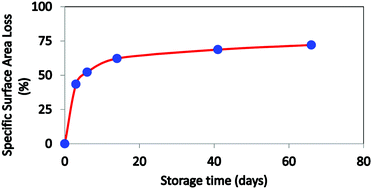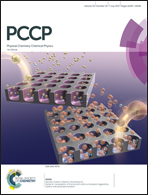Room temperature sintering of polar ZnO nanosheets: I-evidence
Abstract
Polar ZnO nanosheets of a high specific surface area (∼120 m2 g−1) were subjected to storage under different atmospheres at room temperature and analyzed for changes in their textural and crystal properties. During their storage under laboratory conditions (in closed transparent polypropylene vials kept under the light of the laboratory on worktop tables) the nanosheets lost up to 75% of their specific surface area in approximately two months, with most of the loss occurring during the first two weeks. The narrow mesoporosity (∼5 nm pore size) became filled with ZnO during the process. No loss or gain in weight was detected. The loss of specific surface area took place under all of the atmospheres assayed, in the following order: moist air (with or without light) > moist CO2-free atmosphere (with or without light and/or oxygen) > dry CO2-free oxygen-containing atmosphere (with or without light) > dry inert atmosphere (with light) > dry inert atmosphere (in the dark). During storage the ZnO crystals grew mainly by the partial merging of their polar surfaces in a process triggered by the action of moisture, oxygen and, in the absence of these two agents, light. The mechanism of this intriguing phenomenon will be analyzed in detail in the second part of this work.

- This article is part of the themed collection: 2017 PCCP HOT Articles


 Please wait while we load your content...
Please wait while we load your content...